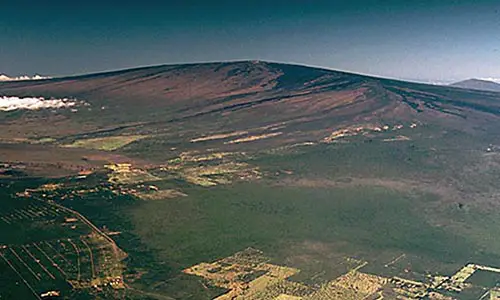1. Mauna Loa means Long Mountain
The word Mauna Loa is Hawaiian meaning ‘Long Mountain’. This name is suitable for the part of Mauna Loa, which extends about one hundred and twenty kilometers from the southern tip of the island to the summit and then northeast to the coastline near Hilo.
2. World’s largest volcano
As the world’s largest mountain and volcano, Mauna Loa is an archetype of a basaltic shield volcano in its late mature stage of existence. It is about 600,000 to 1,000,000 years old.
3. Mauna Loa is an active volcano
Mauna Loa is one of Earth’s most active volcanoes. It has erupted 33 times since its first well-documented historical eruption in the year 1843. Over the previous 3,000 years, Mauna Loa is said to have erupted once in every six years, and proof of four explosive events has been found. Since written records commenced, the volcano has erupted about once every five years.
4. Mauna Loa originates from a hotspot
Mauna Loa probably started erupting between 700,000 and 1,000,000 years ago and has developed steadily since then. Similar to all of the Hawaiian Islands, Mauna Loa has its origins in a hotspot. A hotspot is a plume of magma rising from deep in the Earth’s mantle. The hotspot stays in a fixed position while the Pacific Plate drifts over it at a rate of about four inches per year. The upwelling of the hot magma produces volcanoes, and each volcano erupts for a few million years in preparation of plate movement to carry it away from the rising magma.
5. Visits to Mauna Loa
Much of Mauna Loa sited within Hawaii Volcanoes National Park can be seen closely by visitors. People can get close enough for views and photographs. Although hiking to the top of the volcano is possible, the National Park Service advises that only highly experienced backpackers should try it. Mauna Loa road in the park leads to the floor of a hiking area. Day hikers find hiking a few hours simple enough, but it takes at least two exhausting days to make it to the top. The park is consistently open, but Mauna Loa road sometimes is closed for safety reasons.
6. Mauna Loa is a shield volcano
Mauna is an example of a shield volcano. Shield volcanoes are formed by many lava flows that build up, make long, gentle slopes rather than steep-sided mountain. The volcano is formed by tholeiitic basalt with its oldest rocks dating between 100,000 and 200,000 years old.
7. Mauna Loa covers 50% of Hawaii Island
Mauna Loa extends 13,697 feet above sea level and about 3,100 feet below sea level. Mauna Loa covers more than fifty percent of Hawaii Island, extending into Hilo, majority of the southern part of the island and toward Kiholo Bay in North Kona.
8. Mauna Loa causes the pacific plate to sag
Mauna Loa is so huge that it causes the pacific plate that it sits on to sag under its weight. It has an area of 5,271 square kilometers 2,035 meters square and a volume of 80,000 cubic kilometers.
9. Mauna Loa’s lava flow
Scientists estimate, considering the location of the real eruption on Mauna Loa, that it takes the lava about 29 hours to get to the shoreline below the Hawaiian Ocean View Estates subdivision of Ka‘u. The lava would take as little as three hours to get to the South Kona shoreline, eight days to get to Kiholo Bay and some 280 days to reach Hilo Bay.
10. Mauna Loa is one of the most active volcanoes in the World
The United States Geological Survey estimates that Mauna Loa first erupted between 700,000 and 1 million years ago. Mauna Loa is amidst Earth’s most active volcanoes. Its most recent eruption occurred in 1984. Mauna Loa is sure to erupt again and scientists carefully monitor the volcano for signs of unrest.









Leave a Reply